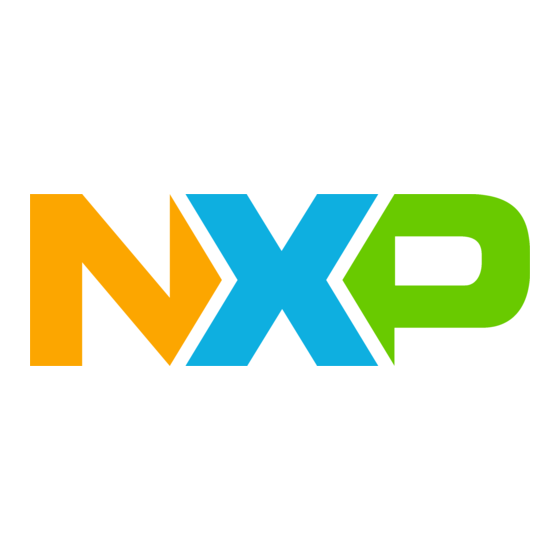
Table of Contents
Advertisement
Quick Links
Advertisement
Table of Contents

Summary of Contents for NXP Semiconductors TWR-MCF5225X
-
Page 1: User Manual
TWR-MCF5225X User Manual Rev. 1.0 Freescale Semiconductor Inc. -
Page 2: Table Of Contents
Contents 1 Overview ..............................3 2 Reference Documents..........................4 3 Hardware Features...........................4 3.1 Clocking ....................................4 3.2 System Power..................................4 3.3 Debug Interface ...................................4 3.4 RS232 Interface...................................5 3.5 Elevator Connections ................................5 3.6 Mechanical Form Factor ..............................5 4 Jumper Table ..............................5 5 Input/Output Connectors and Pin Usage Table ................6 6 OSBDM................................7 6.1 Bootloader Mode ................................7 Revision History... -
Page 3: Overview
1 Overview The MCF5225X Tower MCU Module (TWR-MCF5225X) is a low-cost evaluation, demonstration and development board. The TWR-MCF5225X can operate stand-alone or as the main control board in a Tower System with peripheral modules. The following list summarizes the features of the TWR-MCF5225X: •... -
Page 4: Reference Documents
Refer to Table 1 for more details. 3.2 System Power The TWR-MCF5225X can be powered by the OSBDM circuit via the Mini-B USB connector, J17, or from a source in an assembled Tower System. A standard USB A male to Mini-B male cable (provided) can be used to supply power from a USB Host or powered USB Hub. -
Page 5: Rs232 Interface
3.4 RS232 Interface An RS232 transceiver on the TWR-MCF5225X connects to a standard 2x5 pin header (refer to Figure 2). Selection jumpers J12 and J13 allow UART0 signals to be routed to either the RS232 transceiver or the OSBDM circuit. Refer to Table 1 for more details. -
Page 6: Input/Output Connectors And Pin Usage Table
5 Input/Output Connectors and Pin Usage Table The following tables provides details on which MCF5225X pins are using to communicate with the TWR-MCF5225X sensors, LEDs, switches, and other I/O interfaces. Table 2. I/O Connectors and Pin Usage Table TWR-MCF51CN User’s Manual... -
Page 7: Osbdm
MCF5225X target device. The USB drivers required to communicate with the OSBDM are provided in development tools such as Freescale CodeWarrior. This single USB connection can also be used to power the TWR-MCF5225X stand-alone or in a fully assembled Tower System. 6.1 Bootloader Mode The MC9S08JM60 device used in the OSBDM circuit is preprogrammed with OSBDM debugger firmware and a USB Bootloader. - Page 8 allowing in-circuit reprogramming of the JM60 flash memory via USB. Refer to Application Note AN3561 on the Freescale website (http://www.freescale.com) for details on the USB Bootloader. The USB Bootloader communicates with a GUI application running on a host PC. The GUI application can be found on the Freescale website;...
- Page 9 Freescale™ and the Freescale logo are trademarks of Freescale Semiconductor, Inc. All other product or service names are the property of their respective owners. © Freescale Semiconductor, Inc. 2009. All rights reserved. TWR-MCF51CN User’s Manual Page 9 of 9...

Need help?
Do you have a question about the TWR-MCF5225X and is the answer not in the manual?
Questions and answers